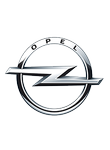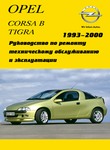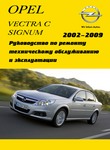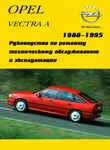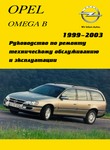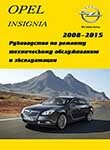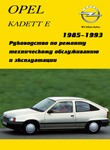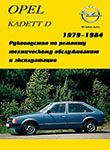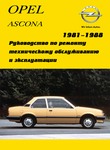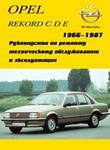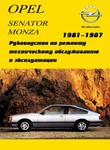Opel Astra F Petrol Service and Repair Manual. Бензиновые двигатели четырёхцилиндровые: 12SC 1196 см³ OHV 1.2 л/ 40 кВт (54 л.с.); 13N, 13NB и 13S 1389 см³ OHC 1.3 л/ 44 кВт (60 л.с.); 14 NV и C14NZ 1389 см³ OHC 1.4 л/ 55 кВт (75 л.с.); 16 SV, 16SH 1598 см³ OHC 1.6 л/ 60 кВт (82 л.с.); X16 SZ 1598 см³ OHC 1.6 л/ 52 кВт (71 л.с.); C16 NZ 1598 см³ OHC 1.6 л/ 55 кВт (75 л.с.); 18 E 1796 см³ OHC 1.8 л/ 66 кВт (90 л.с.); 18 SE 1796 см³ OHC 1.8 л/ 66 кВт (90 л.с.); 20 NE 1998 см³ OHC 2.0 л/ 85 кВт (116 л.с.); 20 SEH 1998 см³ OHC 2.0 л/ 95 кВт (129 л.с.); C20NE, 20SER 1998 см³ OHC 2.0 л/ 85 кВт (116 л.с.); 20XE, C20XE и 20XEJ 1998 см³ DOHC 2.0 л/ 110 кВт (150 л.с.). Руководство по ремонту, техническому обслуживанию и эксплуатации Опель Астра «Ф» выпуск с октября 1991 года по февраль 1998 год
Устройство, ремонт и техобслуживание автомобилей Opel Astra F Здесь
Opel Astra F - Руководство по ремонту и эксплуатации
Видео Opel Astra F замена ШРУСа наружной гранаты, передних и задних амортизаторов, сальников полуоси (Опель Астра «Ф» 91-98)
Opel Astra F общая информация (Опель Астра «Ф» 1991-1998)
Ремонт двигателя - порядок разборки
Гораздо легче разбирать двигатель и работать с ним, если он установлен на стенде. Если стенда нет, двигатель можно разобрать, расположив его на подставке на устойчивом верстаке или на поверхности пола. Перед началом ремонта все вспомогательные агрегаты и компоненты необходимо снять.
К ним относятся следующие:
Генератор и кронштейн. Стартер. Задние трубопроводы и шланги системы охлаждения. Впускные и выпускные коллекторы. Масляный фильтр. Детали распределителя/катушки. зажигания, провода высокого напряжения и свечи зажигания. Опора двигателя. Датчик давления масла. Труба сапуна картера двигателя. Кронштейны двигателя. Датчик ВМТ и кронштейн (если используется. Датчик температуры охладителя (если используется). Датчик детонации (двигатели с двумя распредвалами). Термостат и кожух (двигатели 1,8 и 2,0 л). Топливный насос (карбюраторные двигатели 1,4 л). Кронштейн насоса усилителя рулевого управления (двигатели 1,8 и 2,0 л). Насос усилителя рулевого управления (если используется, двигатели 1,4 и 1,6 л). Проводка. Указатель уровня масла.
Отметьте расположение прокладок, сальников, распорных втулок, шайб, болтов и других мелких деталей. Если работают с некомплектным двигателем (состоит из блока цилиндров, коленвала, поршней и шатунов и все это в собранном виде), тогда головку блока цилиндров, поддон картера, ремень привода, (только двигатели с одним распредвалом) и, вероятно, другие детали (такие, как масляный насос) придется снимать со старого двигателя и устанавливать на новый. Если планируется полный ремонт, двигатель можно разобрать в следующем порядке: Впускной и выпускной коллекторы. Ремень привода распределительного механизма и звездочки. Головка блока цилиндров. Маховик/приводной диск. Поддон картера. Масло насос. Узел поршень/шатун. Коленвал.
1 When engine performance is down, or if misfiring occurs which cannot be attributed to the ignition or fuel systems, a compression test can provide diagnostic clues as to the engine's condition. If the test is performed regularly, it can give warning of trouble before any other symptoms become apparent.
2 The engine must be fully warmed-up to normal operating temperature, the battery must be fully charged, and all the spark plugs must be removed (Chapter 1). The aid of an assistant will also be required.
3 Disable the ignition system by disconnecting the ignition HT coil lead from the distributor cap and earthing it on the cylinder block. Use a jumper lead or similar wire to make a good connection.
4 Fit a compression tester to the No 1 cylinder spark plug hole - the type of tester which screws into the plug thread is best.
5 Have the assistant hold the throttle wide open, and crank the engine on the starter motor; after one or two revolutions, the compression pressure should build up to a maximum figure, and then stabilise. Record the highest reading obtained.
6 Repeat the test on the remaining cylinders, recording the pressure in each.
7 All cylinders should produce very similar pressures; a difference of more than 2 bars between any two cylinders indicates a fault. Note that the compression should build up quickly in a healthy engine; low compression on the first stroke, followed by gradually increasing pressure on successive strokes, indicates worn piston rings. A low compression reading on the first stroke, which does not build up during successive strokes, indicates leaking valves or a blown head gasket (a cracked head could also be the cause). Deposits on the undersides of the valve heads can also cause low compression.
8 Although Vauxhall do not specify exact compression pressures, as a guide, any cylinder pressure of below 10 bars can be considered as less than healthy. Refer to a Vauxhall dealer or other specialist if in doubt as to whether a particular pressure reading is acceptable.
9 If the pressure in any cylinder is low, carry out the following test to isolate the cause. Put a teaspoonfull of clean oil into that cylinder through its spark plug hole, and repeat the test.
10 If the addition of oil temporarily improves the compression pressure, this indicates that bore or piston wear is responsible for the pressure loss. No improvement suggests that leaking or burnt valves, or a blown head gasket, may be to blame.
11 A low reading from two adjacent cylinders is almost certainly due to the head gasket having blown between them; the presence of coolant in the engine oil will confirm this.
12 If one cylinder is about 20 percent lower than the others and the engine has a slightly rough idle, a worn camshaft lobe could be the cause.
13 If the compression reading is unusually high, the combustion chambers are probably coated with carbon deposits. If this is the case, the cylinder head should be removed and decarbonised.
14 On completion of the test, refit the spark plugs and reconnect the ignition system.
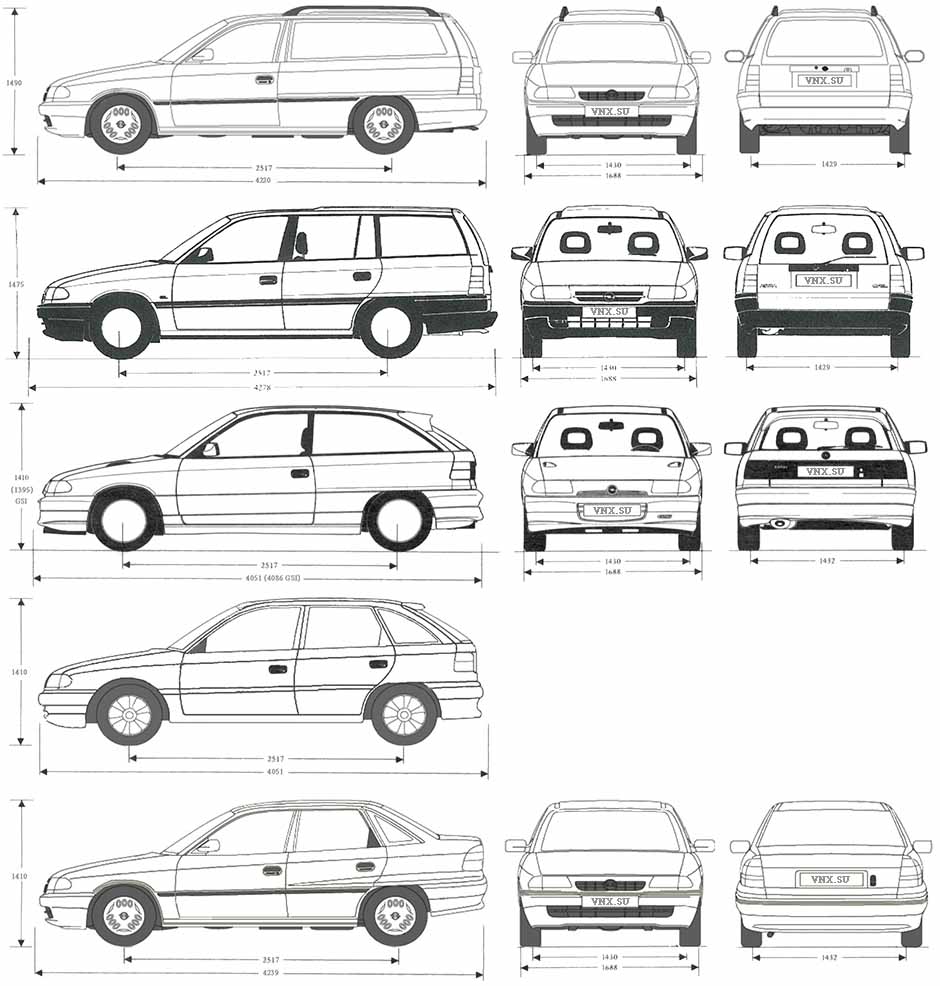
|
||||||||||||||||||||||||||||||||||||||||||||||||||||||||||||||||||
О Книге
- Название: Opel Astra F Petrol Service and Repair Manual
- Бензиновые двигатели: 12SC 1196 см³ OHV 1.2 л/ 40 кВт (54 л.с.); 13N, 13NB и 13S 1389 см³ OHC 1.3 л/ 44 кВт (60 л.с.); 14 NV и C14NZ 1389 см³ OHC 1.4 л/ 55 кВт (75 л.с.); 16 SV, 16SH 1598 см³ OHC 1.6 л/ 60 кВт (82 л.с.); X16 SZ 1598 см³ OHC 1.6 л/ 52 кВт (71 л.с.); C16 NZ 1598 см³ OHC 1.6 л/ 55 кВт (75 л.с.); 18 E 1796 см³ OHC 1.8 л/ 66 кВт (90 л.с.); 18 SE 1796 см³ OHC 1.8 л/ 66 кВт (90 л.с.); 20 NE 1998 см³ OHC 2.0 л/ 85 кВт (116 л.с.); 20 SEH 1998 см³ OHC 2.0 л/ 95 кВт (129 л.с.); C20NE, 20SER 1998 см³ OHC 2.0 л/ 85 кВт (116 л.с.); 20XE, C20XE и 20XEJ 1998 см³ DOHC 2.0 л/ 110 кВт (150 л.с.)
- Выпуск с 1991 года
- Серия: «Workshop Manual»
- Год издания: 1999
- Автор: Коллектив авторов
- Издательство: «Ассоциация независимых издателей»
- Формат: PDF
- Страниц в книге: 245
- Размер: 60.74 МБ
- Язык: Английский - Graecum est, non legitur
- Количество электросхем: 21

